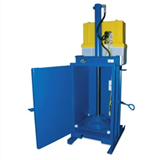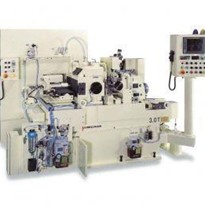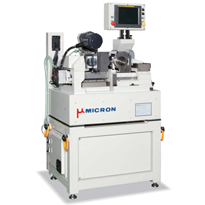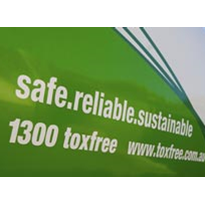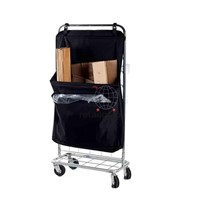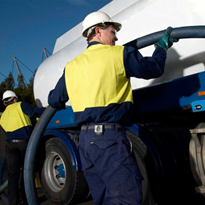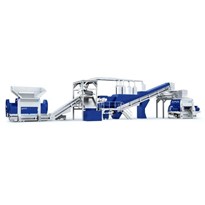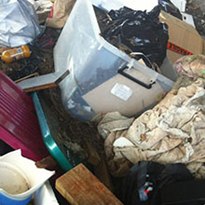The general application of a construction waste management plan is to minimise the amount of material sent to landfills, by diverting the construction waste, and demolition and land clearing debris from landfill disposal. It also helps redirect recyclable recovered resources back to the manufacturing process and redirect reusable materials to appropriate sites.
Commercial construction typically generates around 13kg of solid waste per square metre —the majority of which is recyclable. Salvaging and recycling Construction and Demolition waste can substantially reduce demand for virgin resources and the associated environmental impacts. Effective construction waste management, including appropriate handling of nonrecyclables, can also reduce contamination and extend the life of existing landfills. It is important therefore to formulate an overall environmental strategy to enable achieving sustainability goals without sacrificing financial objectives.
In 2018-19, Australia exported around 149,000 tonnes of mixed plastics – excluding those of polymers of ethylene, styrene or vinyl chloride, which form part of the 2022 ban – and in 2019-20, around 75,000 tonnes were exported at a value $19.3 million.
Approximately 83 per cent of these plastics will be banned from 1 July 2021 unless they are processed further.
From 1 July 2022, a further 37,544 tonnes of plastic waste valued at $12.06 million will no longer be exported. This means that in less than 12 months, Australia’s waste and resource recovery sector will need to deal with at least an additional 100,000 tonnes of waste plastics if not more.
(Waste Management Review, 2021)
An agreement by the Council of Australian Governments in 2020 to ban the export of unprocessed plastic, paper, glass, and tyres also signaled that Australia would take greater responsibility for managing and processing the waste it generated. Joint investments in reprocessing infrastructure by the federal, state and territory governments and industry will help us to bridge the gap in capacity to take the waste we would often export and instead, remanufacture it locally.
New South Wales are leading the way through their Waste Less, Recycle More initiative.
New South Wales is transitioning to a circular economy over the next 20 years. This means that the state will minimise what they throw away, and use and reuse their resources efficiently, making them as productive as possible. As a result, New South Wales will end up with less waste, less emissions, less harm to the environment and more jobs. The move will boost innovation and help drive the economy.
We need to have the services and infrastructure in place to deal with our waste safely, to ensure it does not become a problem for future generations. We also need to work with consumers, industries, and other governments to make the circular economy a reality. (NSW, Waste & Sustainable Materials Strategy)
How can we manage our construction waste?
Governments worldwide have responded to the need to reduce waste with regulation and legislation that have framed a market for building materials and products derived from the construction and demolition waste stream. There are now, more than ever, clear opportunities for business and industry to invest in activities that will create profit and improve environmental outcomes by extracting valuable resources from the waste stream.
Transitioning to a circular economy means we use our resources efficiently and make them as productive as possible. Adopting circular economy principles should occur on four levels: planning, business, design and materials. Reducing waste in construction starts in the planning and material selection, considering what raw materials are required, whether material effect the health and wellbeing of people and the environment across the supply chain, and how these materials can be maintained, repaired and dismantled at their end of life. We can create a circular economy by designing out materials that end up in landfill or as litter, reusing or repairing products before they are thrown out, and recycling material so it can be used multiple times in manufacturing or building. The move will boost innovation and help push the economy forward.
At the same time, we need to make sure we have the services and infrastructure in place to deal with the waste safely, so it does not become a problem for future generations.
Ian Stewart, Director of Grasshopper Environmental says, “consideration given to the end-of-life journey of products is culture driven – and we’ve been part of that culture shift towards circularity. The continuous improvement in innovation and product development presents opportunities for us to better consider a product’s end of life, at the start of its life; which ensures we can meet the ultimate sustainable outcome for a waste product when collected from site”.
There are penalties if sustainability outcomes aren’t met.
Section 143 of the Protection of the Environment Operations Act 1997 requires waste to be transported to a place that can lawfully accept it.
Both the owner of the waste and the transporter are legally responsible for proving the waste was transported to an authorised place. They can be ordered to clean up and pay for such waste to be taken to a lawful place.
Relying on advice from others, such as consultants, contractors or managers of waste facilities, is no defense for transporting waste to a place that cannot lawfully be used as a waste facility. Therefore, it’s crucial that authorised Australian facilities, such as Ecoloop, are engaged.
An important part of the process is reporting on where the waste materials end up and their end use. Reporting and independent auditing provide clients with statistics on how Ecoloop has helped them lessen their environmental impact now and into the future.
Ian Stewart says, “the waste to energy offering is best practice as an alternative to landfill, in helping to achieve sustainability outcomes of 95% and above”.
Recovering energy from waste can be a legitimate and necessary residual waste management option where it can deliver positive outcomes for the community and the environment and assist in lowering our carbon footprint and reducing the need for landfill. Energy recovery can reduce emissions by replacing more carbon-intensive fuels and by stopping harmful methane emissions from materials in landfill.
As Australia’s first Aluminum Composite Panel recycling facility, Ecoloop ensures a complete closed loop process, diverting 100% of cladding waste from landfill.
Ecoloop, has been verified by to comply with Green Building Council of Australia’s (GBCA) Construction and Demolition Waste Reporting Criteria.
The GBCA’s Construction and Demolition Waste Reporting Criteria allows waste contractors and waste processing facilities to be verified by an independent auditor for compliance with minimum standards of reporting. This is a critical step in ensuring not only transparency in the industry but also customer confidence regarding the recycling of waste.
Fairview recognises that waste should be viewed as a resource, so a product stewardship approach has been adopted, where product disposal and end of life is considered – with the goal to keep as many products as possible and materials in use, therefore achieving zero landfill emission.
Execute a sustainable and complaint cladding rectification project. (fv.com.au)











